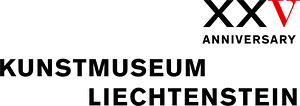with Hilti Art Foundation
Städtle 32
FL-9490 Vaduz
Liechtenstein
Hours: Tuesday–Sunday 10am–5pm,
Thursday 10am–8pm
T +423 235 0300
mail@kunstmuseum.li
Exhibition catalogue edited by Friedemann Malsch and Fabian Flückiger, Vaduz, Liechtenstein, 2020. Contributions by Konrad Bitterli, Catherine Dossin, Reinhard Ermen, Fabian Flückiger, Amy Granat, Pierre Huber, Friedemann Malsch, Matthew McCaslin, Olivier Mosset, Bob Nickas, Steven Parrino, Mai-Thu Perret, Amy O’Neill, Rolf Ricke and Marc-Olivier Wahler. 25 x 21 cm. 208 pages. Published by Buchhandlung Walther König/Koenig Books
Steven Parrino, who died in a motorcycle accident in 2005, was born in New York in 1958; he lived and worked his whole life in that city. By the mid-1980s, at the latest, he had become one of the most important artists in New York and influenced younger artists internationally; he also actively promoted younger female artists. His artistic activity was primarily in the realm of painting, but music played an equally important role for his work. He was as interested in high culture as subcultural phenomena and understood, in a unique way, how to combine these worlds productively.
In the 1970s, painting was repeatedly declared dead. Minimal Art, Land Art, Conceptual Art and the new media of performance and video dominated the art world. For Parrino, who developed his artistic attitude in this context, painting was of interest precisely because it allowed him an opportunity to achieve a new way of linking the aesthetic, artistic and social present in the face of an increasingly contradictory world. He developed a highly complex oeuvre that consciously played with contradictions and knew how to draw creative potential from them. A foundational principle was the experience that social reality in the United States was increasingly governed by a media-dominated conformism and the loss of credibility. Ways of thinking and living that didn’t conform to norms were pushed to the social margins and led to a strong counterculture that often recognized a global apocalypse as a real possibility and, at the same time, a chance for a new ways of life. In the film industry, these included the genres of horror and fantasy, but also hot rod and motorcycle culture and inmusic punk, post-punk and No Wave.
Parrino’s translation of American society into abstract painting was entirely new in this context. He furthered the artistic approach of Andy Warhol and Pop Art as a mirror of society by consciously refusing the ‘classical’ reproduction of image and media. The combination of deconstructive processes of material and linguistic attributions enables a multifaceted overview of the United States in the late twentieth century. The originality of Parrino’s artistic approach, still apparent today, is that he manifested in his work these foundational, anthropological urges in an illustrative fashion and simultaneously placed them in the context of modern art’s history. This gave him an independence from temporal constraints and, in a certain sense, a dimension of timelessness. Today, more than a decade after his death, Parrino’s goal of combining facticity and subjectivity in abstract painting remains highly relevant due to the rise and growing acceptance of populist discourses in politics, society and culture.
A comprehensive publication with texts and interviews has been produced for the exhibition Steven Parrino: Nihilism Is Love at the Kunstmuseum Liechtenstein; it is published by Buchhandlung Walther Koenig and Koenig Books. This first monograph on Parrino includes reprints of the important texts after 1995 and remarkable new contributions.


